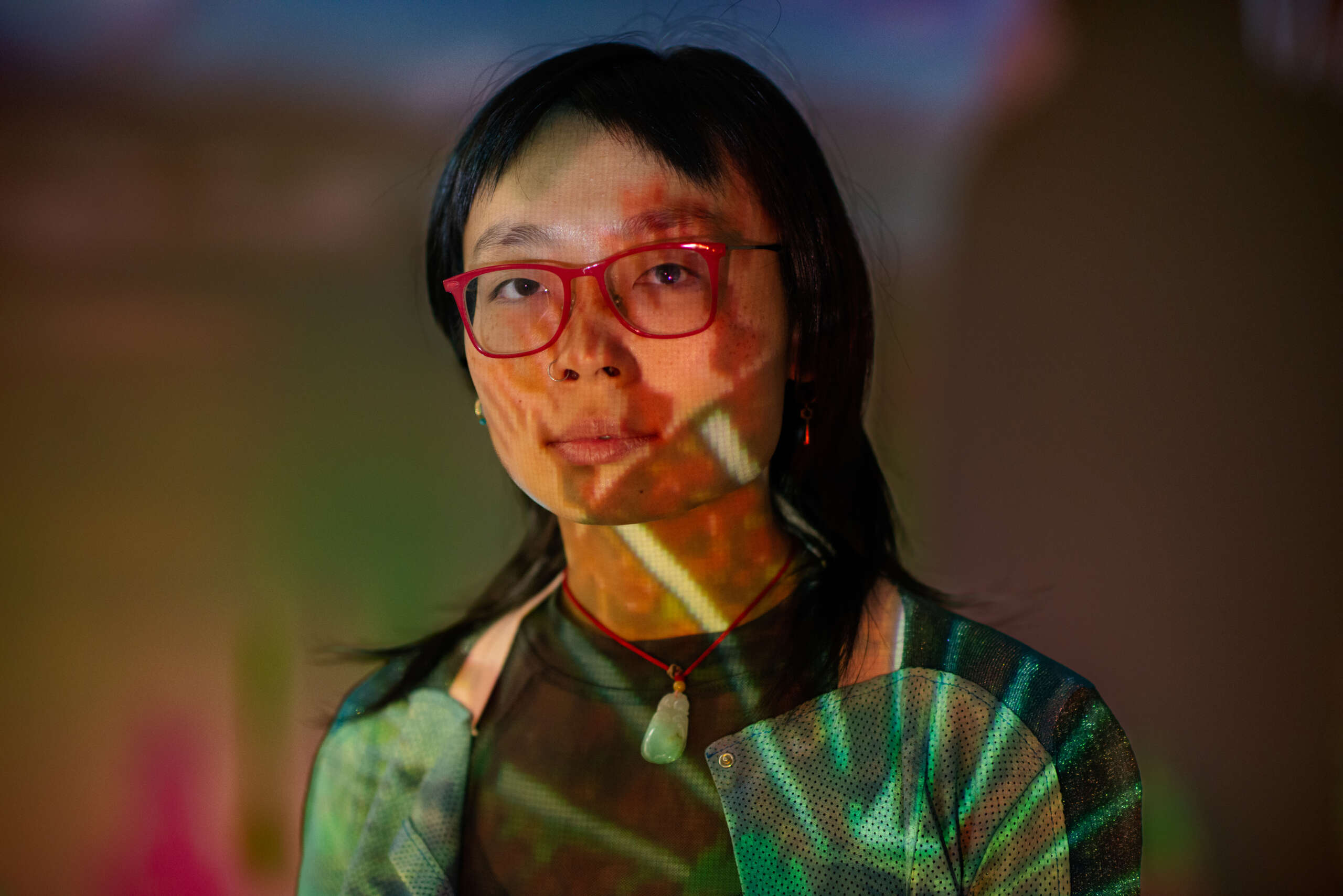We caught up with the brilliant and insightful Banyi Huang a few weeks ago and have shared our conversation below.
Hi Banyi, thanks for joining us today. Can you talk to us about a project that’s meant a lot to you?
My multimedia project ReMazu: Iterations of Devotion was a profoundly meaningful and healing project for me to do. Consisting of a 3D-animated film and sculptural objects, it chronicles the cyclical journeys of a deity named Mazu, a sea goddess and shaman who was first mythologized in Fujian in Southern China, later migrating to Taiwan, and Southeast Asia. Through research, writing and prototypiing, I reimagine Mazu as a contemporary queer deity, informed by the complexity of coastal diasporic identities, a spiritual connection to the powers of water, and an insatiable hunger for transformation.
From building digital-ambient environments, to animating within them a digital avatar that draws from my likeness and the non-human, the process of virtual production became a healing and body-centering experience. Reflecting on this process, the film uses iterative calling to frame Mazu as an emotional reprogramming loop. Driven by the intense desire to be seen/heard/felt/held, the act of inviting her triggers the process of remothering, to create the safety needed to shield from the violent forces of colonialism and Confucianist hetero-patriarchy.
Awesome – so before we get into the rest of our questions, can you briefly introduce yourself to our readers.
Coming from a background of art history and art criticism, I became interested in new media artists who dealt with issues of gender and sexuality. As my depression deepened from the stifling atmosphere of academia, I got into designing and 3D printing wearable accessories, just for fun. Then during COVID-19, I finally came to grips with my desire to develop my own hybrid practice to discover parts of myself that would be otherwise repressed. I got into learning the pipeline for making 3D digital art, creating forms that traversed the digital and physical through animation and 3D printing. I was interested in building 3D avatars and environments with my own sense of aesthetics and cultural references, and integrating parts of them into ritual devices that could be activated through performance.
As someone who grew up in an agnostic environment in China, I came to spirituality and mythology in order to re-situate myself, to heal, and to grasp my identity as a diasporic, non-binary person of color in the US. My ultimate goal is facilitating worldbuilding across virtual and physical realms in a way that reflects the spiritual, non-Western cosmological practices of various Asian and QTBIPOC communities around me. My work is driven by a collective need to center the body, explore its erotic capacity to heal, and disrupt accelerationist views of technology. Through collaboration, I hope to navigate gaps in hetero-patriarchal structures, to break preprogrammed loops of shame and intergenerational wounding.
Any resources you can share with us that might be helpful to other creatives?
Community, meditation, and rest!
I came into artmaking from a very individualist place, because I didn’t better. I thought that I had demonstrate the most intellectual point-of-view, the most developed, original aesthetics, and technically-complicated process in order to be accepted. And as a result, I ran into a lot of walls and frustrations, without understanding why. An important part of my learning is to accept where I am in the present moment, and developing the sense of security I needed by showing vulnerability. You can ask questions to people around you, no question is too dumb, whether it’s regarding your career, a technical issue, or feedback about grant applications. Asides from the obvious advantages of saving time and energy, you gain trust, respect, and emotional resonance when you see vulnerability as a source of strength instead of weakness.
For me, meditation helped me establish confidence and grounding in myself without seeing external rewards as the sole source of validation. That way, you can start to trust your intuition and see your strengths, instead of only being preoccupied with the gap between where you are, and where you want to be. Rest, on the other hand, helps me with recuperating when there’s a burnout, which is hard to avoid within a capitalist system of scarcity.
What do you find most rewarding about being a creative?
For me, the most rewarding part of being a creative is learning. I understand learning in an expansive, non-linear sense.
One involves learning new tools and processes that I could integrate into my practice to make work. For example, I have been bouncing between 3D printing, software for animating like Blender and Maya, and more recently Unreal Engine for creating interactive scenes. Going from knowing nothing about a tool, to gradually becoming proficient in it is a feedback loop that feels so satisfying, especially when you can see changes taking shape in your work.
Perhaps a more profound aspect of learning is learning about myself. I don’t mean it in an egotistical way, but rather a way to reflect on my calling and purpose for being brought to this world. Developing my practice is a journey of understanding my past, contemplating questions such as what traumas and experiences have informed how I approach people, relationships, and desiring accomplishments, and arriving at an understanding of where I want to go in terms of my healing path, how I want to integrate my community as a form of empowerment, clarification of vision, and making a difference for people around me.
Contact Info:
- Website: https://www.banyihuang.com/
- Instagram: @cropp_topp
- Linkedin: https://www.linkedin.com/in/banyi-huang-3a2a8568/
- Other: vimeo: https://vimeo.com/user59657347
Image Credits
Artist headshot image: Photo credit Toby Tenenbaum Other images: image credit the artist


